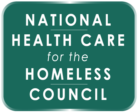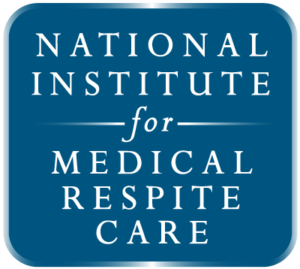Consumer Financial Relief
For front-line staff: how to access stimulus checks, rental assistance, broadband, and funeral expenses for your clients!
There is financial relief available for clients, and it is important for case managers and front-line staff to know about these opportunities and how to access them. Below is information on how to benefit from Stimulus/Survival Checks, the Federal Eviction Moratorium (EXPIRES OCTOBER 3) and Rental Assistance, Emergency Broadband Benefit, FEMA Funeral Relief, and the Child Tax Credit. We encourage you to share this information with your colleagues working directly with clients and others who may benefit from this information.
Stimulus/Survival Checks
The recently passed American Rescue plan provides $1,400 per individual of Economic Impact Payments (otherwise referred to as “EIP” or “stimulus” or “survival” checks). Most individuals making under $75,000 are eligible. See more about eligibility.
How to benefit: To receive the stimulus check individuals must be in the IRS system by filing their taxes for year 2019 and/or 2020. There is an exception for people who do not file but receive Social Security retirement, survivor or disability benefits (SSDI), Supplemental Security Income (SSI) Railroad Retirement benefits, or Veterans Affairs benefits. If an individual has either filed taxes or receives one of these benefits then no action is required and the payment will be sent via check or direct deposit listed on the individual’s tax return or through the same way they receive their benefit. For individuals who do not meet these requirements, they must fill taxes for year 2020 with an IRS 1040 form. While the deadline to file was May 17, 2021, individuals can still claim stimulus money by filing by the October 15, 2021 extended tax filing deadline. Note that it is not required to apply for a tax extension in order to apply late and late-filing penalties will apply if there is money owed on the 2020 tax filing. When filing, individuals can claim the first two economic impact payments on this form by using a Recovery Rebate Credit.
(June 2021 update) A new IRS tool now makes it easier for people experiencing homelessness to access stimulus checks and is designed to help eligible individuals and families who don’t normally file income tax returns.
A note for immigrants: For an immigrant to receive a stimulus check they must be living and working in the U.S. with a Social Security number (SSN). This includes resident aliens, green card holders, DACA-recipients, and workers with H-1B and H-2A visas and but does not include immigrants who file taxes with an ITIN form who do not have a Social Security Number. Learn more about immigrant eligibility from Protecting Immigrant Families.
More Information:
- Fact sheet: What someone should do if they missed the May 17 deadline to file and pay taxes
- Flyer: Spread the Word! Help Non-Filers Receive Unclaimed Stimulus Payments by May 17
- Fact sheet: Guidance for unhoused individuals to receive survival checks from Rep. Cori Bush
- Information on what checks look like and when they will be delivered from the IRS
- About Filing a tax Form 1040, Individual Income Tax Return from the IRS
Rental Assistance and the Federal Eviction Moratorium
The Biden administration announced an extension of the federal eviction moratorium through October 3, 2021 and Congress provided over $45 billion in emergency rental assistance through recent COVID-19 relief bills.
How to benefit: To be protected by the federal eviction moratorium, action is required; renters must provide a signed declaration to their landlords. Landlords may still start the process of evicting and tenants and/or evict tenants for reasons other than non-payment of rent, such as criminal activity or damaging property. Rental assistance money is distributed by the federal government directly to states and local governments. Our partners National Low Income Housing Coalition are tracking in-depth information on available rental assistance programs in each state and local areas where tenants can apply for assistance.
More Information:
- The eviction moratorium declaration can be found in these languages: Arabic | Bangla | Burmese | SimplifiedChinese | TraditionalChinese | Chuukese | Creole | English | Hmong | Khmer | Korean | Lao | Marshallese | Mongolian | Napali | Punjabi (Gurmukhī) | Russian | Somali | Samoan | Spanish CDC | Swahili | Tagalog | Thai | Tongan | Urdu | Vietnamese
- More information on preventing client evictions from NHCHC
- Tools for Tenant Advocates from National Housing Law Project
- Directory of state and local eviction moratoria (these apply in addition to the federal moratorium)
Emergency Broadband Benefit
People who are under 135% of poverty or who receive federal assistance such as SNAP, Medicaid, and other programs may qualify for the Emergency Broadband Benefit. The program, run by the Federal Communications Commissions (FCC), provides a discount of $50/month for broadband services (up to $75/month on tribal lands) and a one-time discount of $100 to purchase a laptop, desktop computer, or tablet. Payments are made directly to broadband providers and do not go directly to individuals. See more about who is eligible.
How to benefit: Households can enroll by contacting their internet service provider directly and asking if they are participating in the Emergency Broadband Benefit program, or by visiting GetEmergencyBroadband.org, or by mailing in an application with proof of eligibility. Look up participating providers here.
More Information:
- Outreach toolkit to assist communities
- Consumer FAQ from the FCC
- About the Emergency Broadband Benefit from the FCC
FEMA Funeral Relief
FEMA is providing funding to cover funeral expenses, at a maximum of $9,000 per funeral, for people who died of COVID-19 after January 20, 2020. To qualify, paperwork is required to show the deceased’s death was attributed to COVID-19 and occurred in the U.S., including U.S. territories. See more about who is eligible.
How to benefit: Applicants must call a toll-free number (844-684-6333 | TTY: 800-462-7585), Monday- Friday between 9 am ET and 9 pm ET to fill out a funeral assistance application with help from a FEMA representative. The FEMA website states it should take 20 minutes to apply through the phone line and supporting documentation may need to be provided after the call through an online portal, fax, or mail.
More Information:
Child Tax Credit
The American Rescue Plan included historic changes to the Child Tax Credit (CTC) for the years 2022-2025. Low-income tax filers can claim a CTC of up to $3,600 per child under age 6 and up to $3,000 per child ages 6 to 17 (previously $2,000 and $1,400 respectively). If the credit amount is more than the taxes owed, the tax filer will be refunded the extra amount. The American Rescue Plan also allows families without an income to claim the credit and for the refund to be paid in advance starting in the summer of 2020. It is required that the child is a U.S citizen, national, or resident alien that meets criteria to be claimed as a dependent.
(June 2021 update) A new IRS tool now makes it easier for people experiencing homelessness to claim Child Tax Credits and is designed to help eligible individuals and families who don’t normally file income tax returns.
How to benefit: If you filed taxes in 2019 or 2020 or if you signed up to receive stimulus checks from the IRS, you will receive these checks automatically. If not, go to www.childtaxcredit.gov and click on the button partway down the page labeled “Non-Filer Sign-Up” to sign up to receive monthly checks. You will need a social security number, email address, and mailing address. If you sign up after the deadline for receiving checks by July 15th, you will still receive the full tax credit, but monthly checks will start coming a bit later.
More Information:
- Fact sheet: What is the Child Tax Credit?
- Information: Advance Child Tax Credit Payments in 2020
- Child tax credit: IRS portals will help you get your money. Here’s what they’re for
Questions? Contact Katherine Cavanaugh, Consumer Advocacy Manager at kcavanaugh@nhchc.org.

